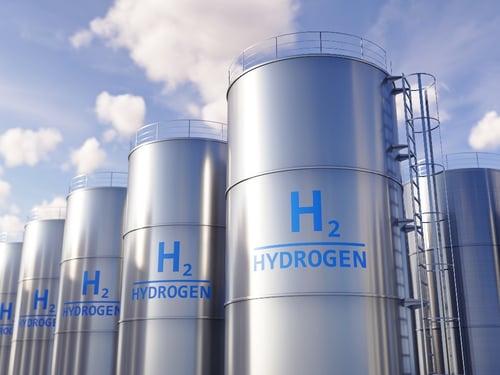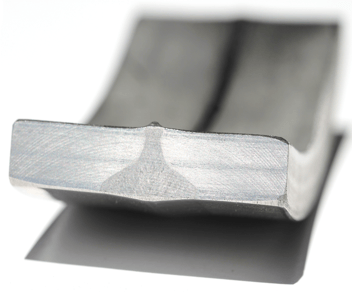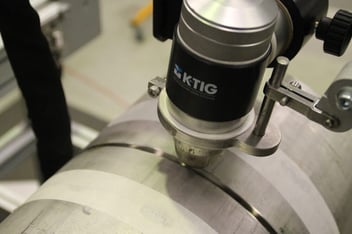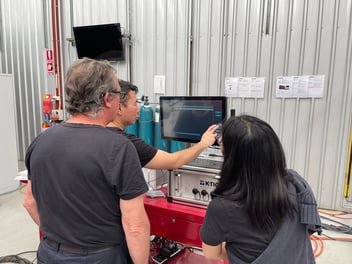7 Ways K-TIG Can Mitigate Hydrogen Embrittlement of Vessels & More
Keyhole Tungsten Inert Gas (K-TIG) welding technology is ideal for applications involving pipes, tanks, and vessels that store and transport hydrogen because it reduces the effects of hydrogen embrittlement on welded joints. That technological advantage improves the integrity of the joints while helping to maximize wear life. It also reduces the probability of emergencies from occurring to compromise worker safety and public safety.
The technologies to which K-TIG is superior in this regard are Gas Tungsten Arc Welding (GTAW), Gas Metal Arc Welding (GMAW), Flux-Cored Arc Welding (FCAW), Plasma Arc Welding (PAW), and Submerged Arc Welding (SAW).
Hydrogen embrittlement occurs when metals become brittle due to the introduction and diffusion of hydrogen into the material. The extent of embrittlement depends upon the amount of hydrogen absorbed by the material’s microstructure. Typically, high-strength microstructures are more susceptible to embrittlement than low-strength microstructures. Embrittlement can lead to cracking, which occurs when stress (a measure of what a material experiences from externally applied forces) is applied to the hydrogen-embrittled object, such as a pipe, tank, or vessel.
Table of Contents
-
How K-TIG Technology Decreases Occurrences of Hydrogen Embrittlement
- The Specifics of Hydrogen Embrittlement
- Concluding Thoughts
Stress can result from unwanted distributions of grain boundary particles or inclusions that lead to cracking and eventual malfunction. The causes of stress include forming and welding during the fabrication process, and wear from service. Severity of hydrogen embrittlement depends upon temperature.
How K-TIG Technology Decreases Occurrences of Hydrogen Embrittlement
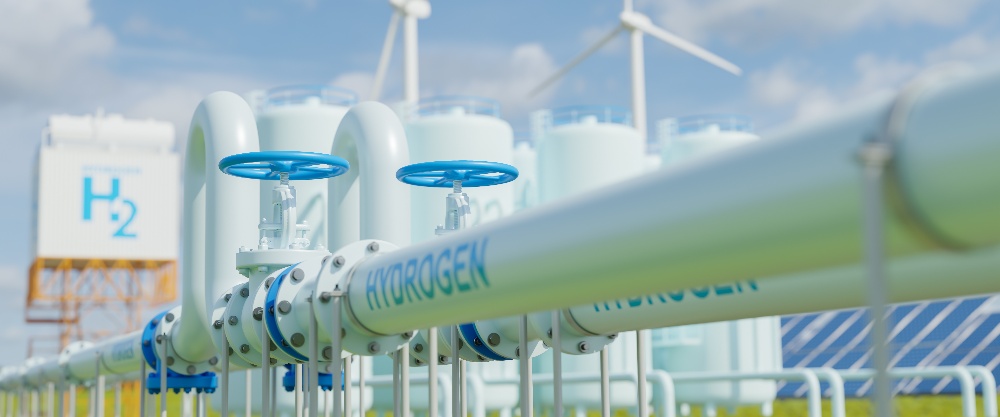
The 7 advantages of K-TIG technology over other welding technologies with respect to hydrogen embrittlement are:
- Low Heat Input. K-TIG welding uses a highly concentrated, high-energy-density arc that provides deep penetration into the base material while maintaining a low overall heat input. The reduced heat input minimizes the time the material is exposed to high temperatures, which is critical to preventing the diffusion of hydrogen into the weld zone. Lower heat input also reduces the risk of cracking associated with hydrogen embrittlement.
- Reduced Hydrogen Absorption. The narrow, deep weld bead produced by K-TIG welding limits the volume of material exposed to the surrounding environment. With less material exposed, there are fewer opportunities for hydrogen to diffuse into the metal structure. This physical condition of the material helps to decrease hydrogen absorption, which is a key factor in hydrogen embrittlement.
- Precise Control. K-TIG welding allows for precise control over welding parameters, such as amperage, wire feed rate, and travel speed. This level of control can be optimized to create a weld with minimal heat-affected zones (HAZs) and reduced residual stresses, further minimizing the risk of hydrogen embrittlement.
- Clean Environment. K-TIG welding is typically performed in an inert gas atmosphere which creates a clean and protective environment around the weld zone. This inert gas shielding prevents atmospheric gases, including hydrogen, from entering the work area during the welding process.
- High-Quality Welds. K-TIG welding is know for producing superior, full-penetration welds with minimal defects. K-TIG welds that are properly executed are less likely to contain imperfections that could serve as initiation points for hydrogen-induced cracking or embrittlement.
- Reduced Post-Weld Heat Treatment. Traditional welding processes often require post-weld heat treatment to relieve residual stresses and temper the metal, which can be a source of hydrogen embrittlement. K-TIG welding’s lower heat input and reduced distortion decrease or eliminate the need for extensive post-weld heat treatment.
- Material Compatibility. K-TIG welding can be sued with a variety of materials commonly used to manufacture hydrogen tanks, pipes, and vessels. Those materials include high-strength steels and stainless steels, provided that the manufacturer or finisher chooses the appropriate process parameters
The Specifics of Hydrogen Embrittlement
-1.jpeg?width=1000&height=560&name=K-TIG%20--%20Hydrogen%20Vessel%20Photo%20(Truck)-1.jpeg)
Most metals are immune to hydrogen embrittlement at temperatures above 302°F (150°C). Cracking caused by hydrogen embrittlement has a variety of names, including Cold Cracking, Delayed Cracking, Hydrogen-Induced Cracking (HIC), Hydrogen Pressure-Induced Cracking (HPIC), Hydrogen-Induced Stress Cracking (HISC), Environmentally Assisted Cracking (EAC), Disbonding, Stress Corrosion Cracking (SCC), and Sulfide Stress Cracking (SSC).
Cold Cracking or Delayed Cracking refers to hydrogen cracks that can form as welded metal or metal workpieces cool. Typically, steel is the metal of which the welded metal or workpiece is made.
HIC and HPIC refer to cracking that occurs in steel pipelines and vessels, including pressure vessels, which absorb hydrogen during service. In contrast, HISC relates to service cracking experienced in duplex (austenitic-ferritic) stainless steels and EAC is a term used in the context of cracking that can occur due to interaction between the component and the surrounding service environment. In fact, hydrogen is one of the few chemical elements or agents which can be responsible for this type of cracking.
In addition, Disbonding refers to the spalling (fragmentation) of internal, weld-deposited cladding in vessels used for processing high temperature hydrogenous gases while SCC is a phenomenon that relates to specific interactions with hydrogen, and SSC is the occurrence of corrosion in environments that are rich in hydrogen sulfide and are therefore susceptible to hydrogen absorption and hydrogen-induced cracking.
Preventing Hydrogen Embrittlement
Hydrogen embrittlement can be prevented by minimizing contact between the metal and any atomic hydrogen source in a potentially corrosive environment. Because corrosive environments are widespread, preventing metal from becoming brittle means coating metal using various pickling processes, or otherwise providing a level of cathodic protection, should be controlled so that hydrogen is not liberated at the component surface.
For heat treatment in furnace environments where hydrogen is present, the gas can be allowed to escape before low temperatures occur. During welding operations, depending upon the process used, some hydrogen absorption may be unavoidable. Therefore, careful control of welding conditions for hardenable steels can be necessary to limit hydrogen absorption, avoid the formation of excessively hard microstructures, or to allow hydrogen to escape before the workpiece experiences critically low temperatures.
If a specific processing operation is prone to causing embrittlement, thermal exposure, sometimes called “baking” can be an ideal remedy. Banking allows hydrogen to escape before exposure to critically low temperatures. In some types of equipment, shutdown procedures can be used to control cooling rates, so hydrogen levels become acceptably low before the workpiece reaches temperatures that are too low for welding.
An ASME Standard That Provides Guidance

In 2019, the American Society of Mechanical Engineers (ASME) developed a set of standards related to hydrogen piping and pipelines. ASME B31.12.2019 standard has increased rigor throughout the welding industry by introducing stringent Vickers hardness (HV) testing criteria for carbon steel weldments. With a maximum limit of 200HV for carbon steel, the standard attempts to minimize the risk associated with hydrogen-induced cracking and brittleness.
This standard addresses more than a technical challenge. Instead, it helps manufacturers of pipes, tanks, and vessels worldwide, deal with a practical concern as the world pivots away from fossil fuels toward renewable energy solutions, with hydrogen being among the most prominent in that category. Therefore, unlike most other standards, the consequences for not adhering to ASME B31.12 2019 include significant risks to public safety and the environment.
Research conducted to develop this standard revealed that conventional welding methods using Gas Tungsten Arc Welding (GTAW), Gas Metal Arc Welding (GMAW), Flux-Cored Arc Welding (FCAW), Plasma Arc Welding (PAW), and Submerged Arc Welding (SAW) do not meet the stringent hardness standards described in ASME B31.12 2019. That is because the high heat inputs that those methods require often result in a failure to achieve the desired hardness level without post-weld heat treatments that can compromise structural integrity of the pipe, tank, or vessel being welded, as well as add complexity and cost to the construction of those objects.
In contrast, K-TIG – Keyhole Tungsten Inert Gas – welding meets the standard because of its narrow root bead or weld extending into or including part of, or the entire, joint root. A narrow root bead results in reduced infusion of hydrogen atoms, enhanced structural integrity, and consistency in weld quality.
What’s more, K-TIG technology’s Minimized Heat-Affected Zone (HAZ) helps with conformance to the standard by creating a reduced hydrogen diffusion path, lower hydrogen absorption rates, preservation of base metal properties, minimized hydrogen pickup, lower residual stresses, improved mechanical properties, enhanced weld quality, consistent microstructure, a streamlined pos-welding process, safeguarding of hydrogen storage and transportation vessels, and compliance with standards.
In numerical terms, the K-TIG process has achieved a Vickers hardness performance of 196HV in a 6-inch (152.4mm) A333 Grade 6 carbon steel with a 0.279-inch (7.11mm) thickness, which surpasses the standard.
Concluding Thoughts
Although K-TIG welding offers numerous advantages for mitigating hydrogen embrittlement, it is essential to consider the specific requirements of an application before deciding which welding technology to use. Careful material selection, weld design, and process optimization are critical to ensuring the integrity and safety of structures that are made to contain hydrogen.
Combined with strict adherence to industry standards, including ASME B31.12 2019, and to best practices related to engineering and manufacturing, K-TIG welding technology can significantly reduce or eliminate issues related to hydrogen embrittlement in vessel applications.
In this instance, the convergence of technology and standards can result in a future that is safer and more sustainable than the current one involving the use of welding technologies to manufacture and maintain pipes, tanks, and vessels that transport or store hydrogen or hydrogen-based energy sources. Those fuels can have a significantly positive effect on economic growth and on the health of our planet.
To find out how K-TIG technology can help you overcome challenges related to hydrogen embrittlement and more…


